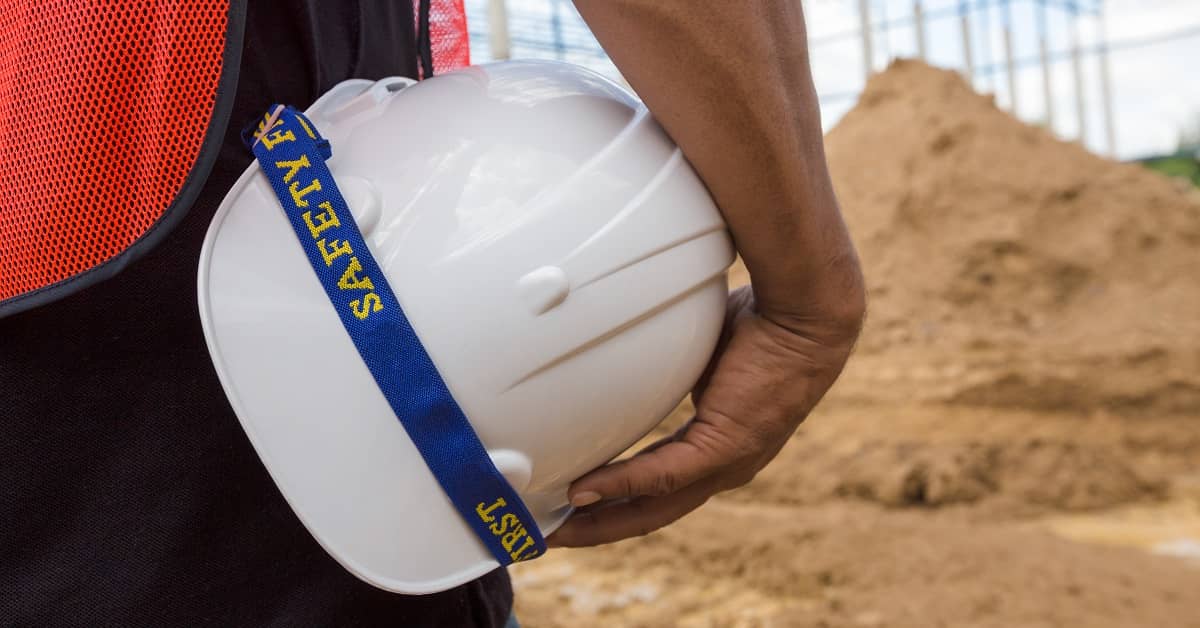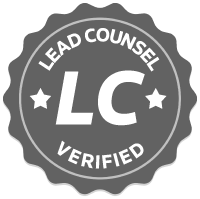
Construction sites are among the most dangerous workplaces in the country. Accidents on the job are commonplace, with many construction workers suffering serious injuries and even death each year. Nationally, the latest statistics from OSHA reveal that construction deaths account for an alarming one in five workplace fatalities.
Given the seriousness of construction accidents, workers need to be aware of their legal rights if they get hurt on the job site. A construction accident lawyer can discuss your options for compensation.
You should take these steps immediately following a construction accident:
Some construction injuries can be treated with first aid. However, if you are seriously injured, it is crucial to seek immediate treatment.
Your best option is to call 911 (or have a coworker or supervisor do it for you) and wait for the ambulance to arrive. Paramedics will assess your injuries and transport you to the hospital.
Medical treatment after a construction accident can be a daunting and lengthy process. You will likely be examined by multiple doctors who will run a battery of tests. Depending on the nature of your injuries, you may need to have surgery, be hospitalized, and undergo physical therapy and other forms of rehabilitation.
Throughout the course of medical treatment, it is important to remain calm and get the care you need. Your health should be your number-one priority after a construction accident.
Although a supervisor or project manager may have been informed of the accident at the time it happened, this is not the same as reporting a construction accident. In Texas, workers are required to report an on-the-job injury to their employer in writing no more than 30 days after an accident.
Prompt reporting of a construction accident is vital for two reasons:
1. Reporting the accident within 30 days preserves your right to workers’ compensation benefits
AND
2. A written report creates a record of the construction accident
Texas is the only state that does not require employers to carry workers’ compensation insurance. Unfortunately, many construction companies choose to go uninsured, leaving workers with no access to benefits in the event of an accident.
However, the widespread lack of workers’ compensation coverage among employers in the construction industry does leave workers with an expanded ability to sue for the injuries and damages they sustain. A written report outlining how the construction accident occurred is a key starting point for your claim.
Although your top priority after a construction accident should be to get medical treatment, it is also important not to overlook the steps you can take to begin building your claim. The best time to gather evidence is immediately following the accident.
If your injuries are not serious and you can move on your own safely, consider taking photos of the accident site and interviewing witnesses. This information could be of the utmost importance for the successful resolution of your claim.
Realistically, however, your injuries may be too severe to stay at the construction site and perform these tasks. If this is the case, stay still and wait for help to arrive. Meanwhile, try to focus and make note of the following:
Evidence of a construction accident is often short-lived. If you cannot collect the evidence on your own, you should seek legal assistance promptly.
Because construction workers generally have to sue to recover damages after an accident, it is important to contact a lawyer as soon as possible. An experienced attorney can review the circumstances of the construction accident and identify options for recovery of damages.
If your employer has workers’ comp insurance, a lawyer can help you fill out the Form-041 (Employee’s Claim for Compensation for a Work-Related Injury or Occupational Disease) sent to you by the Division of Workers’ Compensation. Completing this form establishes your right to medical and income benefits.
Your construction accident lawyer can also investigate to determine if the negligence of one or more parties contributed to your injuries. In Texas more than any other state, it is crucial to explore issues of fault – a lawsuit may be your only option to recover damages.
Hiring an experienced attorney is the best way to preserve the integrity of your claim while you focus on recovery from your injuries. A knowledgeable lawyer can assist you with any and all aspects of your case, whether that involves appealing denial of workers’ comp benefits or taking a personal injury or product liability case to court.
Staying organized is a must in the aftermath of a construction accident. Workers should keep track of all paperwork and electronic documents related to their injuries and medical treatment, as well as their legal claim.
After a work injury, you should maintain an ongoing file with all of the following records:
Documentary evidence is essential in any construction accident claim. With this in mind, it is important to share these and other records with your attorney on a regular basis.
Determining who is at fault after a construction accident can be difficult. Much of the time, employers, contractors, manufacturers, and site owners will try to shift the blame to the construction workers who were injured in the accident.
Any party responsible for ensuring a safe work environment could be found negligent if you end up injured after a construction accident. Those most commonly found liable are:
Don’t let them blame you for their negligence! If you’ve been injured in a construction accident, contact an experienced construction accident attorney to help you pursue compensation for your losses.
This is worth repeating—get medical care! Your health is the most important thing to care for after a construction accident.
Once your immediate medical needs are seen to, you can begin preparing your injury claim. You will need to:
Remember, retain copies of all records and evidence. Keep a journal documenting appointments and events (dates, times, care, etc.), the extent of your injuries, and how you feel daily. Collecting this documentation will help prove your claim with workers’ comp insurance and pursue compensation elsewhere if necessary.
The Occupational Safety & Health Administration (OSHA) has a program designed to call attention to the Focus Four or Fatal Four Hazards in construction. Deaths related to these hazards comprised 31.5% of the total workplace fatalities in 2019. The goal is to raise awareness of these common hazards and provide training to prevent further injury and death.
The four categories of hazards that cause the majority of construction industry fatalities are:
According to OSHA, “A fall hazard is anything at your worksite that could cause you to lose your balance or lose bodily support and result in a fall.” Some examples are a scaffold collapsing under workers, a worker falling through the opening created for a skylight, tripping over an item in a cluttered workspace, or slipping from the unguarded edge of a roof.
These include incidents when a worker is crushed under or between objects or caught in machinery. Some examples are a cave-in in a trench or excavation, being crushed when a rolling object or vehicle traps a worker against another object, or having a loose piece of clothing catch on a piece of machinery and drag a worker in.
This type of injury occurs when an object or piece of equipment forcibly impacts a worker. With a struck-by injury, the impact alone is responsible for the injury. There are four struck-by categories. A worker on a construction site may be struck by any of the following:
OSHA explains that this hazard “results when a person is exposed to a lethal amount of electrical energy.” Some examples are accidentally hitting overhead power lines with an aluminum ladder, drilling into an underground power line, or using an extension cord or flexible cord improperly.
Falls are the leading cause of fatalities in the construction industry. According to the U.S. Bureau of Labor Statistics (BLS), there were 951 occupational fatalities in the construction and extraction industry in 2021. Of those deaths, 370 were due to a fall, slip, or trip.
The BLS asserts that falls are the second leading cause of work-related deaths in any industry. Falls, slips, and trips totaled 850 in 2021, making up 16% of the 5,190 work-related fatalities that year. The fall-related deaths in the construction occupation make up 43% of the total fall fatalities for any industry.
Though it is widely accepted that the construction industry is one of the most dangerous, these fall-related deaths are often preventable. The number one most frequently cited standard after an Occupational Safety & Health Administration (OSHA) inspection is inadequate fall protection. With proper fall protection training and enforcement, lives can be saved.
The Focus or Fatal Four Hazards are the most common causes of construction injuries (falls, caught-in/between, struck-by, electrocution), but what are the most common injuries after a construction accident? Some of the workplace injuries commonly suffered in a construction accident are:
If you’ve been injured or a loved one has died in a construction accident, you may be able to pursue compensation for your losses. In Texas, companies are not required to carry workers’ comp insurance. That means you may have to employ other means for just compensation. Hire an experienced Houston construction accident attorney to advocate for your rights.
If you work in construction, you know the dangers you face on the job every day. The majority of construction workers suffer some form of injury over the course of their careers. In many cases these injuries are serious, potentially resulting in permanent disability and significant financial losses.
Patrick Daniel Law is Strategic, Meticulous, and Merciless in the handling of construction accident claims. We closely review the facts of your case, develop individualized legal strategies, and aggressively pursue the benefits and compensation you and your family deserve.
To speak to an experienced construction accident lawyer, please call (713) 999-6666 today for a free review of your case. Patrick Daniel Law serves clients throughout Houston, all of Texas, and nationwide.
 Top Truck Accident Lawyer in Pasadena
Top Truck Accident Lawyer in Pasadena Best of The Best Attorneys
Best of The Best Attorneys Best of the Best Houston Chronicle 2021
Best of the Best Houston Chronicle 2021 Best Motorcycle Accident Lawyers in Houston 2021
Best Motorcycle Accident Lawyers in Houston 2021 American Association for Justice Member
American Association for Justice Member The National Trial Lawyers 2016 – (Top 40 under 40)
The National Trial Lawyers 2016 – (Top 40 under 40) Multi-Million Dollar Advocates Forum 2016 (Top Trial Lawyer)
Multi-Million Dollar Advocates Forum 2016 (Top Trial Lawyer) Million Dollar Advocates Forum 2019 (Top Trial Lawyer)
Million Dollar Advocates Forum 2019 (Top Trial Lawyer) America’s Top 100 Attorneys 2020 (High Stake Litigators)
America’s Top 100 Attorneys 2020 (High Stake Litigators) Lawyers of Distinction 2019, 2020 (Recognizing Excellence in Personal Injury)
Lawyers of Distinction 2019, 2020 (Recognizing Excellence in Personal Injury) American Institute of Personal Injury Attorneys 2020 (Top 10 Best Attorneys – Client Satisfaction)
American Institute of Personal Injury Attorneys 2020 (Top 10 Best Attorneys – Client Satisfaction) American Institute of Legal Advocates 2020 (Membership)
American Institute of Legal Advocates 2020 (Membership) Association of American Trial Lawyers 2018 - Top 100 Award recognizing excellence in personal injury law
Association of American Trial Lawyers 2018 - Top 100 Award recognizing excellence in personal injury law American Institute of Legal Professionals 2020 (Lawyer of the Year)
American Institute of Legal Professionals 2020 (Lawyer of the Year) Lead Counsel Verified Personal Injury 2020
Lead Counsel Verified Personal Injury 2020 The Houston Business Journal 2021
The Houston Business Journal 2021